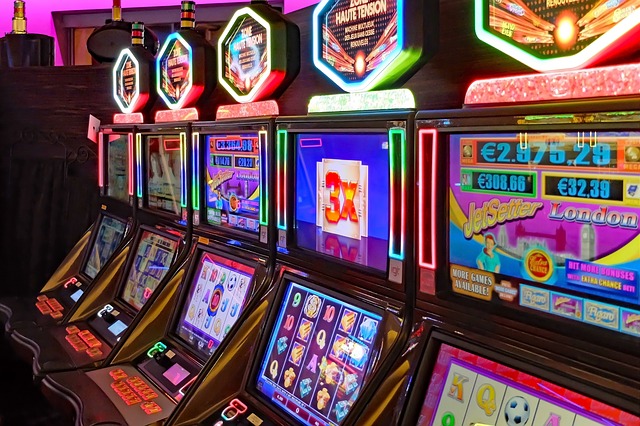Most businesses use statistics and analytics to one degree or another, but there is only one industry that is built solely on this discipline. This week we look at the casino business – in particular, the odds on slots. 
Casinos have some flexibility in setting the odds on slots. How much should a casino return to gamblers? States set minimum payout levels (as low as 75% in some cases), but most casinos elect to pay out more than the minimum. Traditionally, the payout policy was determined by guesswork and reaction to competitors. Pay out too much and you forego profit, pay out too little and gamblers will seek greener pastures, the thinking went.
In 1998, Gary Loveman, a professor at Harvard Business School, took over the CEO position at Caesar’s Entertainment. He collected data and determined that it would take a customer over 40 hours of continuous play to distinguish definitively between their current average 95% payout and a slightly reduced 93% payout. In effect, customers would be unable to detect a reduction in payout in their own play, since they are unlikely to sit and play at the same machine for 40 hours (different machines can have different payouts). Buddy Frank, in his blog CDC Gaming Reports, states that manufacturers of slot machines certify that their machines will hit their true payout only at 10 million handle pulls (that’s a lot longer than 40 hours, though it is surely a conservative, and hence exaggerated number).
So Loveman decided to reduce the standard payout from 95% to 93%, a decision that reportedly boosted profit by $300 million during the ensuing two decades (this according to Bernard Marr in his book Big Data in Practice).
When it comes to sourcing talent for the gambling industry, Harvard is minor league compared to the University of Nevada at Las Vegas, which offers a Masters degree in hospitality administration with a gaming track, and San Diego State University (SDSU). One study, published several months ago and co-authored by UNLV Professor Anthony Lucas and SDSU professor Katherine Spilde, followed gamblers at a variety of casinos with varying slots payoffs (between 85% and 93%). They found no tendency for players to shift away from low payout games to higher payout games. The study was done under the auspices of SDSU’s Sycuan Institute on Tribal Gaming.
This study will probably have an effect on the payout rates at some of the more generous casinos, such as those on the Las Vegas strip, where payouts are typically in the neighborhood of 95%.
Is this Power Analysis?
Statisticians will recognize that these studies are really a cousin of power and sample size analysis – how big a sample is needed to detect a given effect size (say, a payout difference of two percentage points). Of course, the “detection” mechanism is not a statistical significance test, but rather human intuition. It is well known how far human intuition and judgment can stray from the truth when dealing with random events – it is prone to finding “effects” that are not real and are merely the product of random chance. This tendency would add noise and only increase the sample size needed for a definitive detection of a real effect.
Payouts Only Part of the Picture
Payout rates are worth studying and tinkering with, from a profit standpoint, but they are only part of the data picture. When he became CEO, Loveman introduced the big data driven Caesars Total Rewards program. Driven by a comprehensive and multi-faceted system to collect customer data (including video surveillance on-premises of customer behavior), Total Rewards aimed to boost revenue from multiple sources, not just taking money at the gaming table. Data on 45 million customers helped inform:
- Which revenue streams (gambling, food, drinks, entertainment) are most important to which customers
- What incentives were most predictive of boosting revenue from which customers
- Who the steady and loyal customers were, so incentives for return visits could be appropriately targeted
- Real-time “interventions” with high rollers to maintain good will during big losing streaks (counter-intuitively, sometimes the house will step in and offer complimentary meals, drinks or entertainment during a losing streak, to distract and foster good feelings)
Loveman was credited with introducing across-the-board analytics and improved profits to the casino business.
“The casino business has this mathematical beauty to it. But nobody was using it.”
– Gary Loveman
Bankruptcy for Caesars
Mathematics (probability and statistics, really) may be powerful. But, in this case, it was trumped by greed.
The success of the analytics approach attracted attention, and Caesars was bought out by a private equity group that included current Treasury Secretary Stephen Mnuchin. The deal closed in 2008 and could not have come at a worse time – just before the financial collapse of that year that put a huge dent in tourism and travel (read more here). The deal was also highly leveraged, and eventually cause Caesars to collapse under a mountain of debt.
One interesting vignette came out of the bankruptcy proceeding – according to Marr, Caesar’s most valuable asset was not its real property, but its customer data.
Epilogue
Loveman did not stick around for the Caesars denouement; he returned to Harvard as a Senior Lecturer in Finance and then went to work for Aetna. When Aetna started acquisition discussions with CVS, Loveman again decamped – this time to his own startup Well Dot, Inc. Caesar’s used big-data-driven analytics in marketing campaigns to get customers to stay one more night, buy a concert ticket, eat more on the property, etc. Loveman wants Well Dot, Inc. to use these same techniques to pester users of its app to keep on top of their meds, watch their weight, exercise properly, etc.